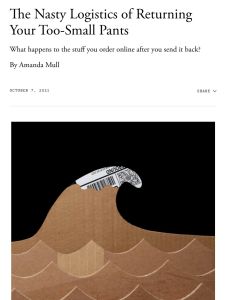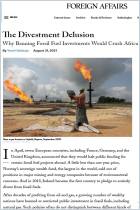
Article
The Nasty Logistics of Returning Your Too-Small Pants
What happens to the stuff you order online after you send it back?
The Atlantic,
2021
Recommendation
Few businesspeople care to discuss – and consumers rarely give a second thought to – the economic and environmental costs of product returns. Writing in The Atlantic, Amanda Mull explains how the “free shipping, free returns” model of online commerce enables customer overbuying, resulting in a glut of returned merchandise and logistical burdens on businesses. Retailers discard or destroy up to 25% of returns rather than restock, resell or donate them.
Summary
About the Author
The Atlantic staff writer Amanda Mull frequently reports on consumer behavior and business trends.
By the same author
Learners who read this summary also read
Article
Book
Book

















Comment on this summary or Comenzar discusión